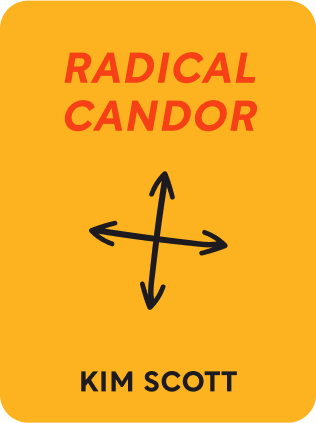

This article is an excerpt from the Shortform book guide to "Radical Candor" by Kim Scott. Shortform has the world's best summaries and analyses of books you should be reading.
Like this article? Sign up for a free trial here .
What are employee growth plans and why do you need them? How should you work with your employees to create them?
Employee growth plans set up individual employees to progress on a trajectory of improvement. Also known as an employee professional development plan, they’re based on the individual’s own aspirations and abilities.
Keep reading for advice from Radical Candor on how to create employee growth plans.
Creating Employee Growth Plans
Understanding growth trajectories is a good first step to honoring the needs of your employees—the next step is learning about their dreams and goals, and helping them recognize how their work can contribute to those dreams with employee growth plans.
The Three Conversations You Should Be Having
To create and achieve employee growth plans, have honest conversations with all of your direct reports—regardless of performance—about who they are, what their goals are, and how you can help them reach those goals. There are three conversations vital to effective growth management: the life story conversation, the dreams conversation, and the planning conversation
The Life Story Conversation
The life story conversation is essential to getting to know your employees—if you want to care personally about them, you need to know them personally. Ask your employees about their life story, focusing on changes they made and why these choices were made—it’s often here that you’ll discover their values. For example, if your employee says, “I dropped out of grad school because I was tired of talking about theory and not using any of the skills I was learning in a tangible way,” you learn that one of her values is seeing tangible results of her work. These conversations also lend context to abstract values that can easily be misunderstood. While a focus on “financial independence” might make you think an employee is materialistic, knowing his life story might reveal that his mother was often absent because she was working two jobs to make ends meet, and he doesn’t want the same experience for his children.
Approach this conversation with respect and care—while most people will be comfortable with it, you might have someone who is significantly uncomfortable with the questions. In this case, drop the matter and move on quickly.
Ultimately, this first conversation should reveal what’s truly important to your employee, which helps contextualize your next conversation, in which you’ll talk about their dreams and figure out what skills and opportunities will be most useful to them.
The Dreams Conversation
The dreams conversation helps you understand what your employees ultimately want out of their careers and their lives, and as their boss, how you can help them get there. This makes their work more meaningful and rewarding and they’re assured that you truly care about them as people.
It’s important to frame this conversation around dreams. Calling them “long-term goals” or “plans” usually invites professional, not personal answers that are often catered to what the employee thinks their boss wants to hear. It’s possible that their dreams will be work-related, such as, “I want to retire at 50,” but this reframe often pushes people to name their non-work goals such as, “I want to own a dude ranch in Colorado.”
In preparation for your next conversation, task them with figuring out the necessary skills to reach their dream. Then, they should consider the importance of each skill, and their competence. This step reveals where they need more experience and skills development, and gets you thinking about how you’ll help them achieve that. Think about networking you could help them with, or new projects that you could put them on.
The Planning Conversation
The last conversation, the planning conversation, is where you help your employee come up with a solid plan for achieving their dreams. This conversation shouldn’t be focused on telling your employees how to move up in your organization. Rather, it should be focused on finding ways to make their current work clearly translate to preparation for their dreams.
List the ways their work can change to better support the direction they’d like to move in—such as working with mentors, taking on new projects to develop skills, or taking classes. Then, come up with action items for each idea listed, and a deadline. This provides tangible steps toward building their dream and demonstrates how their current work is important to getting there. This is what fills in the substance of your employee growth plans.
Regularly Provide Opportunities Related to the Employee Growth Plans
Alongside talking to your team members about their dreams and coming up with an employee professional development plan, you should check in once a year on their professional performance and growth trajectory. This tells you if their needs are being met, how their work affects the team, and what their plan should look like moving forward.
There are three parts to this exercise:
- Draw five boxes and label them—superstars, rock stars, mediocre, low performance with no growth, and low performance with expected rapid growth. Put your team members’ names into their corresponding boxes. Don’t hem and haw over this—it shouldn’t take more than 20 minutes. While doing so, keep an eye out for bias. Are your more senior members really superstars, or are they coasting on the work of the superstars under them? Ideally, your boxes will reflect excellent performance at all levels, with senior people showing more gradual growth and newer people showing rapid growth.
- Come up with a short plan of opportunities and growth for each person—if you’ve been doing the work of regularly checking in with them and thinking about their growth, this should only take about 20 minutes.
- Superstars: Make sure you’re offering them challenges and projects that will help them continue to learn.
- Rock stars: Make sure you’re offering them what they need to feel appreciated and continue doing consistent strong work.
- Mediocre: Think of what you can offer them to give them a boost, such as classes or projects, or consider if they’d do better elsewhere.
- Low performance with expected rapid growth: Think of what you can offer them in terms of clearer guidelines, better training, or a transfer to a role they’re better suited for.
- Low performance with no growth: If you’ve taken the time to ask a third party to check your decision and they agree, it’s time to start the process of firing this person.
- Compare your employee professional development plan with those of your colleagues—this gives you a common sense of what it means to do bad, good, or excellent work. Having these conversations is especially important when you’re managing other managers, so you have consistent expectations across all levels of management. If employees are treated differently under different managers—for example, if one manager values superstars more, but another manager values rock stars more—your workplace will feel unfair and confusing.

———End of Preview———
Like what you just read? Read the rest of the world's best book summary and analysis of Kim Scott's "Radical Candor" at Shortform .
Here's what you'll find in our full Radical Candor summary :
- How you have to be direct with people while also caring sincerely for them
- Why relationships are an essential part of successful leadership
- How to create a strong team culture that delivers better results






